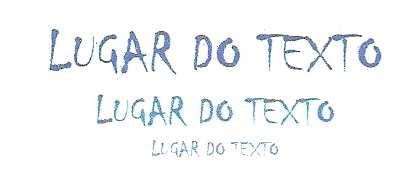There’s a famous saying that truth is stranger than fiction, so it stands to reason that reality is simply more interesting than fiction. That is probably why writers so frequently base characters on people they have met, people who have quirkier and more interesting traits than anything the writer could conjure himself. Here is a list of some classic characters you may not have known were based on real people.
Tintin

Some people are only familiar with globetrotting comic reporter Tintin through the Steven Spielberg film that came out in recent years, but the character has been around since 1929, the creation of Belgian comic writer Herge. Over 200 million volumes chronicling Tintin’s adventures have been sold, and he became one of the most beloved international comic strip characters in history.
But even those who are familiar with the comics might not know about the real life inspiration for Tintin Danish Boy Scout named Palle Huld, who at the age of 15 won a contest to re-enact Phineas Fogg’s circumnavigation of the globe in the novel Around the World in 80 Days. Of course, unlike Fogg, Huld needed only 44 days to complete the trip. This took place in 1928, less than a year before Tintin debuted. Some people believe Tintin was based on another young adventurer named Robert Sexe, but one look at Huld should give anyone pause and convince just about anyone that he was, indeed, the real-life Tintin.
Ebenezer Scrooge

Ebenezer Scrooge is the infamous miser from the Charles Dickens classic A Christmas Carol, who learns the error of his ways when he is visited by three ghosts on Christmas Eve. It is one of the most told and retold tales in modern literature, ranging from CGI retellings to re-imaginings like Scrooged. But while you are no doubt familiar with the story, you may not have realized that Scrooge is based on a real-life person named John Elwes.
Elwes was an 18th century politician and notorious penny pincher, and despite having a vast fortune he lived like a homeless hermit, by all accounts. He would eat rotten food and live in abandoned houses rather than finding himself a home or buying food that wasn’t totally gross. The eccentric miser was born into money but refused to spend any of it, choosing instead to live in squalor in order to save his fortune.
Severus Snape

Other than the titular character, Severus Snape is likely the most widely recognized character from the Harry Potter universe. A cold and morally ambiguous character, he is almost immediately an enemy of Harry and his friends, and was brought to life on the big screen by Alan Rickman. But certainly, a potentially evil wizard in this young adult novel about all things magic could not have possibly been inspired by anyone in the real world, right?
If you said “of course not” then we hate to break it to you, but Professor Snape was in fact based on a real person named John Nettleship. So what did this man ever do to inspire such a loathsome sounding character? Why, he was JK Rowling’s teacher, of course. Snape taught potions at Hogwarts, so it makes a bit of sense that Rowling would use her former chemistry teacher as the inspiration. Nettleship did not know he was the inspiration for the character until the films came out and his students, along with his wife, pieced things together. Rowling’s mother actually worked as an assistant in the chemistry department under Nettleship, so we can’t help but wonder what the real life professor, who dies in 2011, thought about the revelation that Snape was in love with Harry’s mother.
Dorian Gray

The Picture of Dorian Gray is the only novel that famed wit Oscar Wilde ever wrote, and it tells the story of a man of unsurpassed beauty who has his likeness painted as a portrait. To make a long story short, Dorian sells his soul in order to maintain his youth and beauty while the painting version himself ages instead. It’s a bit of a strange and supernatural tale, but the character of Dorian Gray, believe it or not, was based on a real man named John Gray.
John Gray was an acquaintance of Wilde, and that’s really just a nicer way of saying he was one of Wilde’s many trysts. The real Gray was a poet who traveled in the same social circles as Wilde, and was reputedly an “Adonis” of a man. While Wilde did not bother to change his last name for the fictionalized version, he did change John to Dorian, but it was for a very specific purpose. The Dorians were an ancient Greek tribe that famously practiced and engaged in sex between men. Apparently, when the story came out the real Gray was mortified, as it was abundantly clear that the titular character was based on himself, and the connection caused a rift between he and Wilde.
Sherlock Holmes

At first glance, Sherlock Holmes and a medical lecturer might not seem to have much in common. After all, Holmes is perhaps the greatest fictional detective of all-time, and certainly the most famous. However, when you really stop to think about it, it makes sense that Holmes would be based on a medical doctor renowned for his keen observational skills and superior intelligence. That man was Dr. Joseph Bell, and he was a lecturer at the University of Edinburgh in Scotland in the 19th century.
Bell was an acquaintance of Holmes’ creator Sir Arthur Conan Doyle, and in fact served as the doctor’s clerk at the Edinburgh Royal Infirmary. Bell was famous for being able to observe a man and instantly deduce things he could not possibly have known, which should like a familiar trait to anyone even loosely aware of Sherlock Holmes. Reportedly, Bell even advised the police in several investigations in Scotland, including the Ardlamont Mystery, and testified as an expert witness in the ensuing murder trial.
